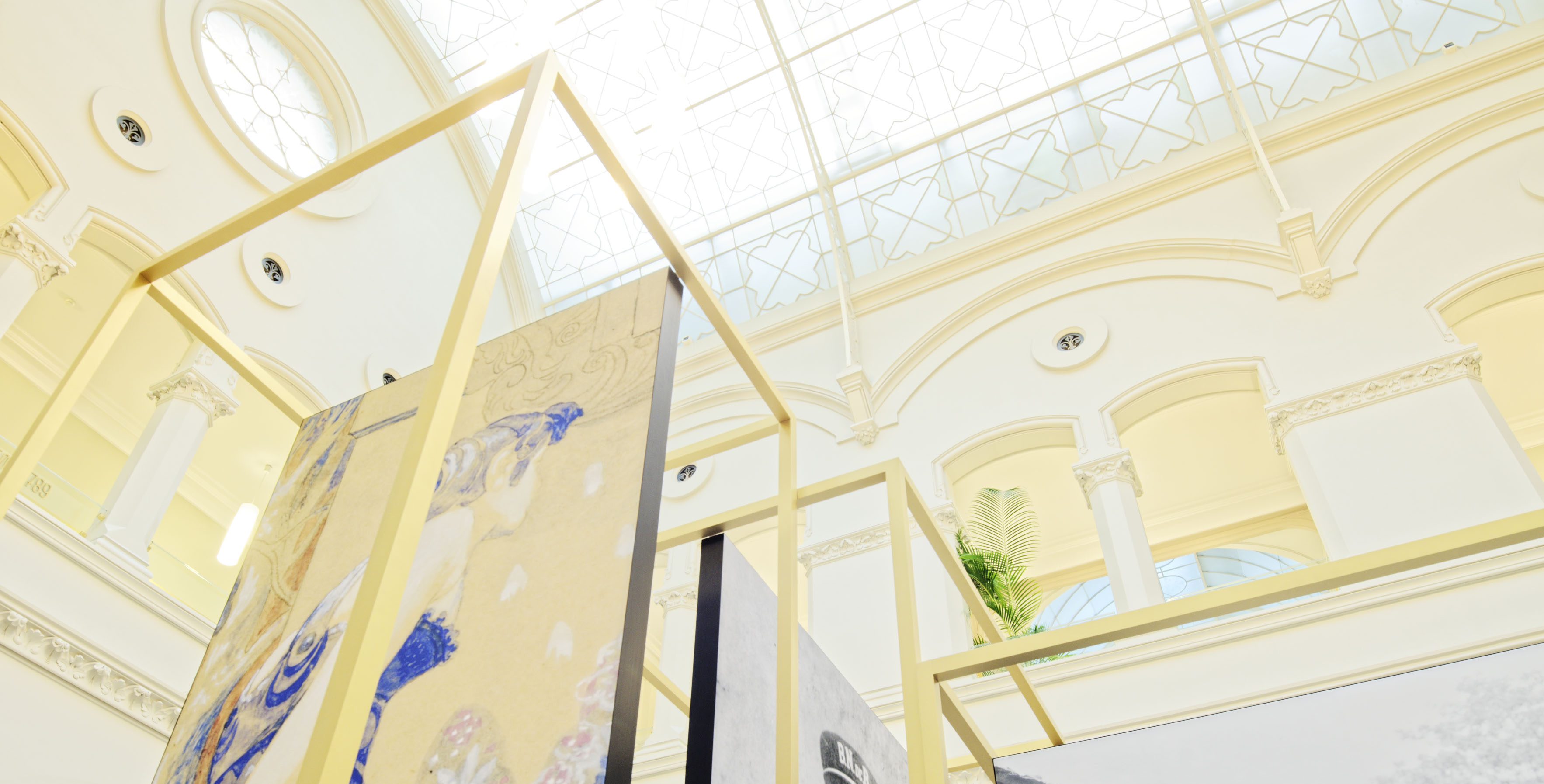
From the Union du crédit de Bruxelles to the National Bank of Belgium’s Museum
The building that houses the Museum of the National Bank of Belgium (NBB) is an architectural jewel nestling in the heart of Brussels. Inaugurated by the NBB in 2010 following renovation work, it was designed in 1872 by the Brussels architect Désiré De Keyser (1823-1897) for the Union du Crédit de Bruxelles (UCB).
This bank was set up by Brussels entrepreneurs and businessmen who, following the 1848 banking crisis, decided to join forces to create their own bank. It was therefore a cooperative bank: the bank’s shareholders were also its customers. The UCB offered banking services, particularly short-term loans, which at that time entrepreneurs could no longer obtain from the big commercial banks. In 1969 this building was bought by the United California Bank, and in the 1980s it became the property of the National Bank. Various parts of the building were listed in 1984, such as the banking halls with their glazed canopies and the entrance hall and staircase, imposing constraints on the building’s painstaking restoration, completed in 2009.
To introduce sufficient light, Désiré De Keyser had chosen to cover the building with a glazed canopy on the lines of the nearby Saint-Hubert galleries. The canopy comprises two large rectangular cupolas: one over the main banking hall and the other over a second, smaller one. These glazed roofs rising to 18 and 14 metres respectively are a great technical and aesthetic achievement. They are supported by a steel structure forming a barrel vault. The combination of steel and glass, typical of the era, results in a very elegant building.
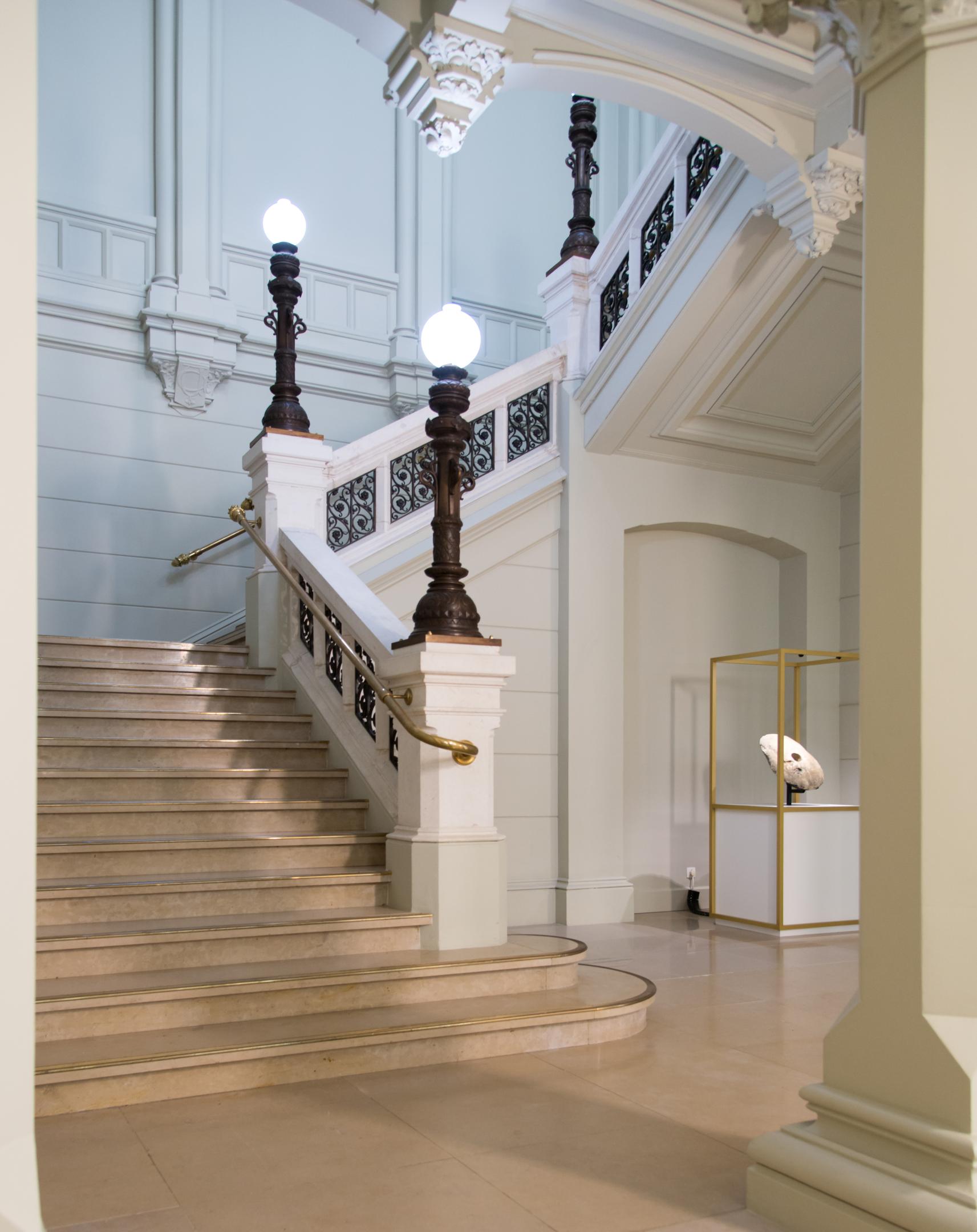
The décor originally created by the workshop of the Parisian sculptor Georges Houtstont (1832-1912) is an understated version of the Gothic style. No gold leaf and no bright colours in this bank, but monochrome everywhere, emphasising the quietness and restraint of the whole.
The majestic staircase is awe-inspiring. The lamps or girandoles were cast by the Compagnie des Bronzes, a Brussels foundry. When the building was restored, exact replicas of these girandoles were made. The bank’s customers originally made their way up the staircase to the offices of the management and staff on the first floor, as still depicted today in a mural.
Accessible only during special events organised by the museum, the building’s cellars still contain two vaults, restored to their original condition. These ingeniously secured strong rooms are a unique part of the bank’s heritage.
This building, an exceptional example of Brussels bank architecture, exudes authority and prestige. The abundant light and imposing spaces were designed to demonstrate the power of the institution and thus to instil confidence among the customers. Its style can be termed eclectic in view of its diverse elements. The general design is classical, combined with modern materials such as metal and glass, interspersed with neogothic elements in the form of decorative sculptures.

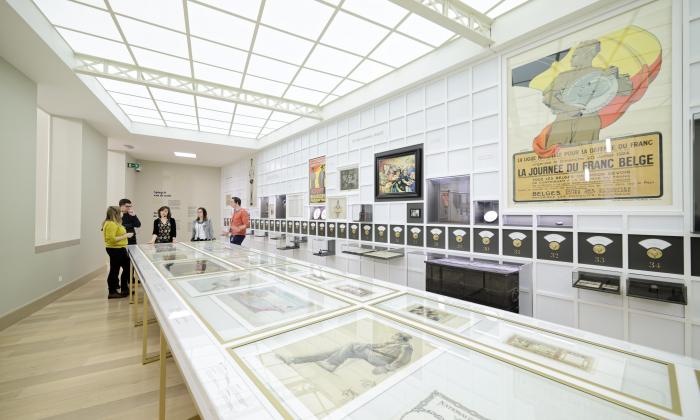
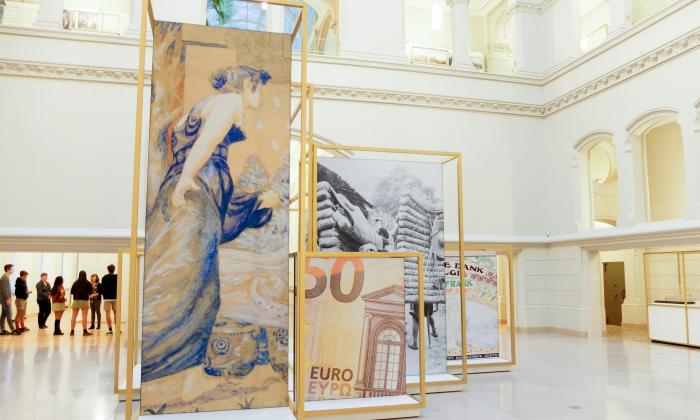
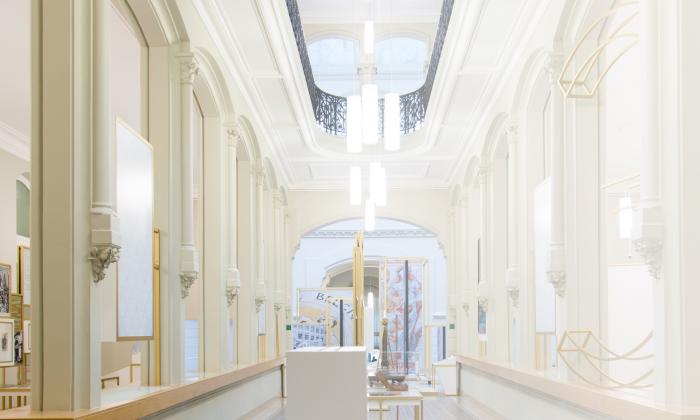
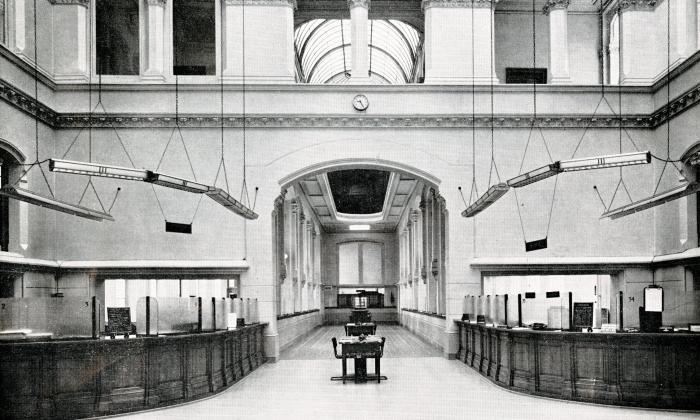
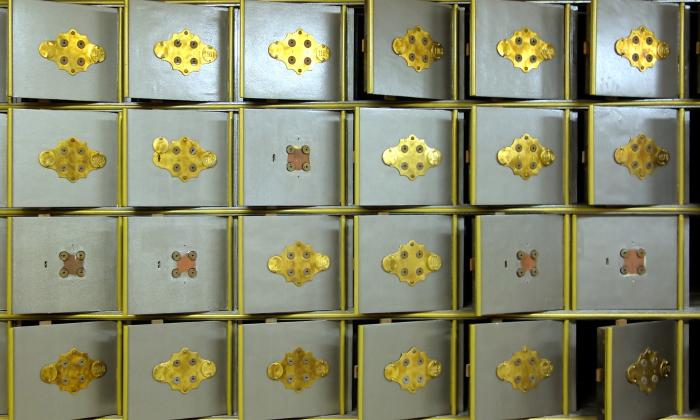
Find out more
The National Bank of Belgium’s original buildings
While the UCB building now houses the National Bank’s museum, it was never used as offices by the NBB.
Founded in 1850, the National Bank was first housed in pre-existing buildings on rue Montagne aux Herbes Potagères, then rue Royale. As the headquarters became increasingly cramped, the National Bank decided to commission a new building, designed to meet all its needs, on rue du Bois Sauvage, opposite St Michael and Saint Gudula’s cathedral. The work took place from 1860 to 1874 but the first departments had already moved in by 1865.
The Belgian architects Henri Beyaert (1823-1894) and Wynand Janssens (1827-1913) were responsible for designing the buildings in a fairly classical architectural style, very similar to the Ecole des Beaux-Arts. That link is very clear from the symmetry of the façade of the governor’s residence. This building where the governor lived, worked, and entertained is decorated with numerous symbolic and allegorical features. It is the only surviving relic from those days.
In the 1950s, the National Bank again needed more space. The architect Marcel Van Goethem was asked to build new, modern offices on the site of the existing buildings plus an impressive banking hall, which is still in operation today. This hall is around 200 metres in length and has a slightly curved ceiling composed of 9000 translucent tiles rising to a height of 8 metres, so that that this grandiose, modern hall is always flooded with light.
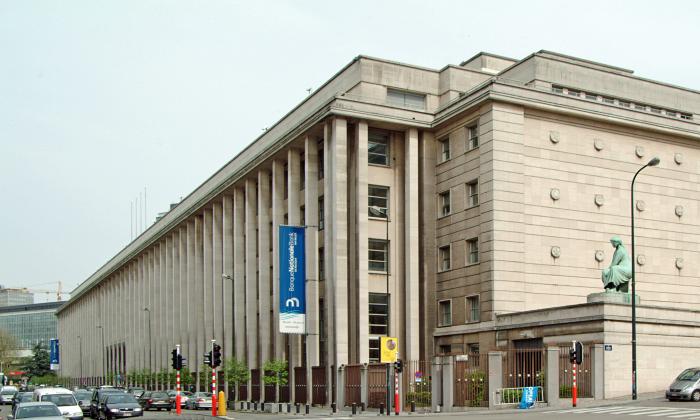
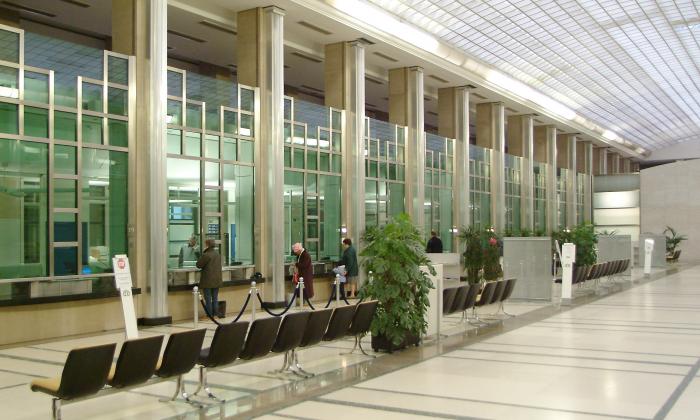
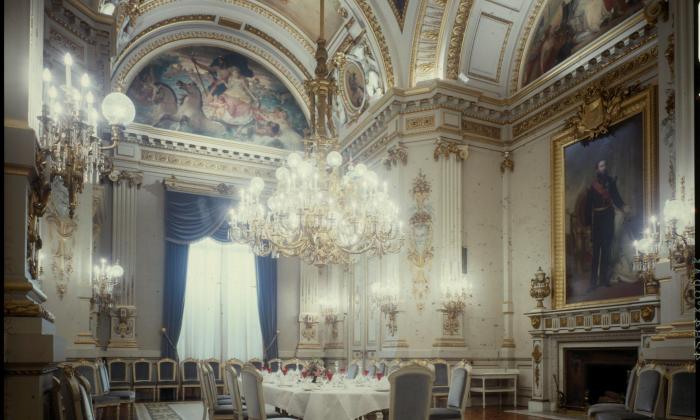
Bibliography
- L’architecture éclectique d’Henri Beyaert, catalogue d’exposition, Bruxelles, BNB musée, 1978
- J. VICTOIR, J. VANDERPERREN, Henri Beyaert. Du Classicisme à l’Art Nouveau, Sint-Martens-Latem, Éditions De Dijle, 1992
- W. PLUYM (éd.), L’Hôtel du gouverneur de la Banque nationale de Belgique, Anvers, Pandora, 1995
- NBB Antwerpen. Een gebouw, een eeuw, catalogue d’exposition, Bruxelles, BNB musée, 1979
- M. VAN GOETHEM, Construction des nouveaux bâtiments de la Banque Nationale de Belgique à Bruxelles, in: Annales de l’Institut technique du Bâtiment et des Travaux publics, n°. 184, mars – avril 1951, pp. 2 – 18
- M. VAN GOETHEM, Immeuble de la Banque Nationale à Bruxelles, in: Rythme, n°. 15, juin 1953, pp. 6 – 13
- L. NOVGORODSKY, Les nouveaux bâtiments de la Banque Nationale de Belgique à Bruxelles, in: La technique des travaux, 29, 1953, n°s. 7-8, pp. 215 – 236
- Marcel Van Goethem, architecte D.P.L.G. Oeuvres et études, 1940 – 1959, Bruxelles, BNB, 1959